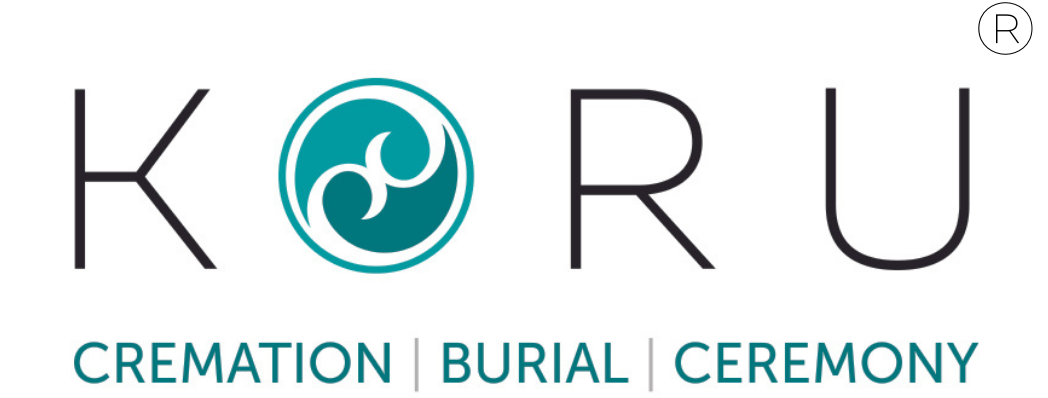At KORU Cremation | Burial | Ceremony, we help families honour and celebrate the last wishes, lives, and values of their loved ones in a meaningful way with eco-friendly death care practices. We specialize in natural and eco-friendly death care practices for body care, disposition, burials, memorials, and more.
To shed some light on what this looks like, we’ll be doing a 4-part series on more sustainable choices that folks can make when it comes to death care. This first article covers disposition options with a lighter ecological footprint.
Why Choose a Sustainable Funeral?

Before we explore what these options are, let’s take a look at the impact of some current conventional death care practices.
The Environmental Impact of Conventional Funerals
According to the Green Burial Council, in the US alone, conventional burials use approximately 4.3 million gallons (that’s over 16,277,270 litres) of embalming fluid each year. This fluid contains formaldehyde, methanol, and benzene which can leach into the ground and pollute the environment (not to mention causing harm to staff who work with these chemicals).
Meanwhile, 20 million board feet of hardwoods, including rainforest woods, are used annually for burials in the US. Flame-based cremation, although a less environmentally impactful disposition option, still requires fuel and results in carbon dioxide emissions. (We’ll explore its impacts, as well as a more sustainable alternative, further down in this post.)
Incorporating Sustainability into Death Care
Many folks’ final wishes when it comes to disposition and memorial are shaped by their values, and they may incorporate conscious choices to leave a lighter footprint or give back to the earth into their death care planning.
Choosing more environmentally responsible options around death care can be a meaningful way to make your last act a commitment to sustainability, or to honour the legacy of a loved one who lived these values in their lifetime.
Let’s take a look at some options that can reduce pollution and emissions and protect natural resources and ecosystems.
Eco-Friendly Burial Options
Natural burial, also known as green burial, encompasses a number of different practices and principles that promote sustainability.
Rather than embalming a body and using a wood or metal casket (and often, a grave liner or vault) to enclose the deceased before final burial, natural burials forgo chemicals that can contaminate soil and water, and use biodegradable caskets or shrouds that decompose naturally.
In addition to reducing chemical use and avoiding non-biodegradable materials, certified green burial cemeteries also have specific land use designations that aim to preserve the natural habitat, wildlife corridor, or green space. These sites are often protected under a covenant, easement, or other enforceable guarantee to promote ecological restoration and conservation efforts in the long term.

Sustainable Cremation Practices
Traditional, or flame-based, cremation, generates a lot of pollution. On average, a single flame-based cremation uses about 29 kilowatt hours of electricity as well as 285 kilowatt hours of gas (about the energy use of an average house for two weeks!), resulting in around 573 lbs of CO2 emissions.
The good news is that there is a scientifically and industry-proven alternative that does not contribute to global warming at the same rate: alkaline hydrolysis, also known as aquamation. The unfortunate news is that as of the publishing of this blog, it is not yet legal in BC. At KORU Cremation | Burial | Ceremony, we do everything we can to offset the impact of flame-based cremation while advocating for this more sustainable solution.
Aquamation (Alkaline Hydrolysis)
Alkaline hydrolysis, also known as aquamation, water cremation, bio cremation, or resomation, has been around since the 1990s. It uses potassium hydroxide, water, low heat, and pressure to reduce a body to bone remains, without burning fossil fuels or causing direct emissions of greenhouse gasses or mercury.
Bio-Response Solutions, a company that makes aquamation systems and equipment, reports that aquamation provides 90% energy savings as compared to flame-based cremation.
We’re happy to see that aquamation is gaining more recognition and becoming more widely available as a form of disposition in the US and Canada. Until then, we’ll continue to petition the government for change. You can, too, by signing the Aquamation BC coalition petition.
Our Green Death Care Practices
At KORU Cremation | Burial | Ceremony, our focus is on providing eco-friendly practices and products that serve our community, whether it’s choosing not to offer embalming services on-site, sourcing locally or sustainably made burial and memorial products, or advocating for more eco-friendly disposition methods.
Further commitments to sustainability include using clean energy through Bullfrog Power to offset cremation emissions, vehicle usage, and other energy usage, and planting trees every month with Tree Canada.
We also try to partner with other sustainable organizations who are committed to rethinking the death care industry, whether it’s planning a more eco-friendly funeral service or opting for a more sustainable memorial method.
We will be exploring all of these in detail in the rest of this series, so stay tuned!
Curious to learn more about how you can plan a more eco-friendly farewell? Contact us here.
Sign up for our newsletter and follow us on social for more tips on sustainable practices.



